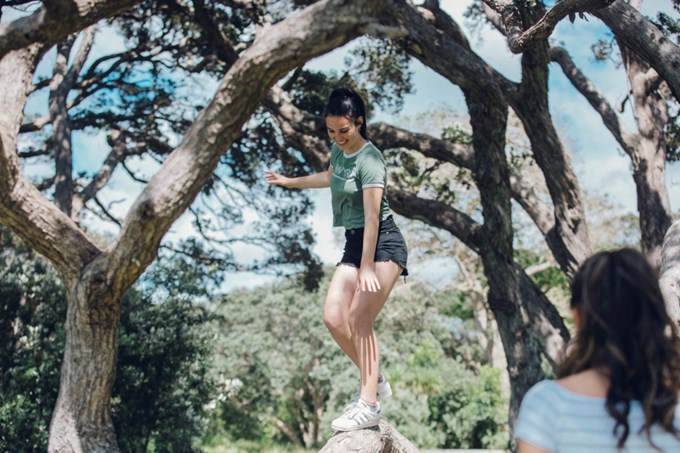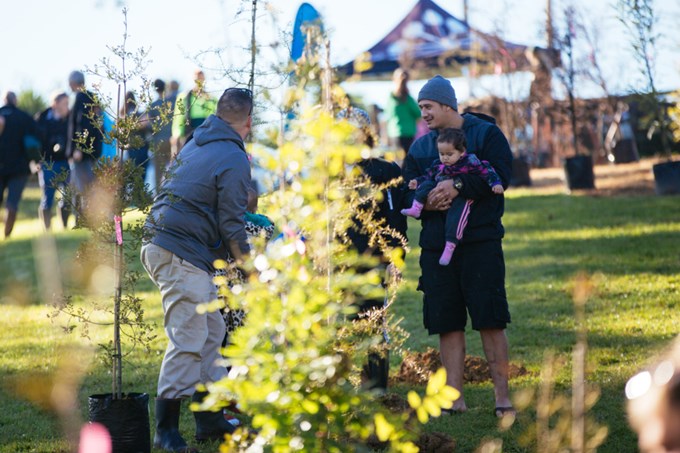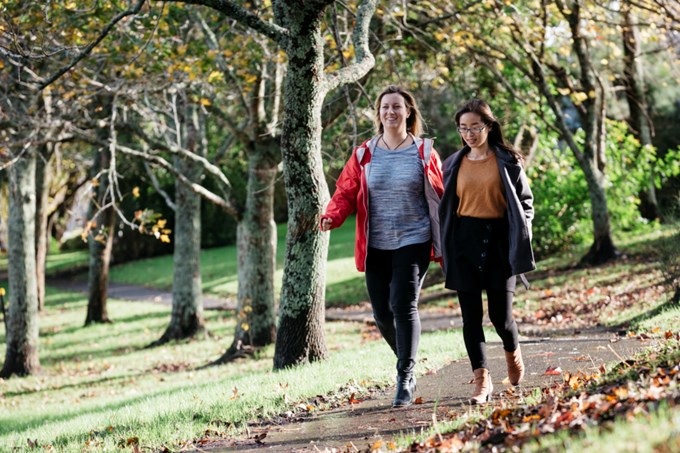An increasing body of evidence suggests that a closer connection to nature is good for our heads, our hearts and our lungs. But as Auckland grows, our precious green spaces and trees are increasingly under threat. In the first part of a three-part series for OurAuckland, Elly Strang looks at the many benefits green spaces bring to the health of our people and our city.
Humans have long believed that being in or around nature has healing properties. But the idea was previously more intuitive than evidential – a warm glow rather than hard science. Now, with large-scale public-health problems such as obesity and depression being linked to a rise in technology, a disconnect from the outdoors and more time spent inside, researchers are showing renewed interest in the topic, and studies from around the world are finding that those who live close to green spaces enjoy positive impacts on both their physical and mental wellbeing.
The science behind green wellbeing
A new Danish study has found that when children grow up with green space around them, they have 55 per cent less risk of developing a range of mental-health problems later in life. Researchers from Aarhus University found that the more greenery a person is exposed to up to the age of 10, the lower the risk of 16 mental disorders, including anxiety and depression, even when controlling for factors such as socio-economics and urbanisation.
“Our findings affirm that integrating natural environments into urban planning is a promising approach to improve mental health and reduce the rising global burden of psychiatric disorders,” the study’s authors say.
Closer to home, a team led by University of Canterbury professor Simon Kingham has studied the effects of public and private green spaces on physical health. The research analysed the activities of 12,500 New Zealanders, including 2500 Aucklanders, and found they were less likely to be overweight or suffer from obesity if they lived close to a park.
“Globally, nearly every study I’ve read says the more green space you’ve got near where you live, the better your health is,” Kingham says. “Park creation and planting in existing public spaces may serve as low-cost disease prevention options.”
In its 10-year budget released last year, Auckland Council boosted funding for parks, open spaces and community facilities to $3.7 billion, with $1.4 billion set aside for acquiring and developing public open spaces and parks. This was ahead of infrastructure as the single biggest increase within the budget.

Improving equity of access to green space
Kingham says another finding of his team’s study was that people in lower socioeconomic areas tended to have less access to good-quality green spaces. “All green space is not the same.”
This is why Auckland Council’s Urban Ngahere (Forest) Strategy is vital to the health of the city. It aims to address the unequal distribution of trees across the region and increase the benefits of a green city for all.
Find out more about the Urban Ngahere Strategy
It also aims to undo some of the damage done by urbanisation, rising inequality and climate change. The plan is to increase Auckland’s average tree-canopy cover from 18 to 30 per cent, while targeting areas where cover is scarce, such as parts of south Auckland, so that all local board areas have at least 15 per cent cover.
Councillor Penny Hulse, chair of the council’s Environment and Community Committee, says Auckland’s rapid urban growth has swallowed up native bush and open spaces.
“It hasn’t always been the norm to replant trees in areas that have been developed since the 1980s,” she says. “With higher-density housing we’ve lost a lot of urban trees, as people haven’t always valued them as much as they should.”
Hulse says so-called “leafy suburbs” have fantastic tree cover, but the urban canopy is not evenly distributed across Auckland. In some neighbourhoods, streetscape planting – where trees are planted along the roadside – is also lacking.
“The amalgamation of Auckland’s former councils means we get to look across the whole region to see where those gaps are,” she says. “Among the lowest on the canopy cover statistics are places like Ōtara and Papatoetoe. We’d like to make them as leafy as the suburbs in Waitematā, not just because it’s beautiful, but because it’s better for communities.”
'Knowing, growing and protecting'
The Urban Ngahere Strategy is underpinned by a three-pillar framework: knowing, growing and protecting. This involves tracking the size, health, condition and distribution of trees around Auckland and increasing the number to boost the benefits and address inequity, while also protecting existing trees.
Hulse says local boards are organising planting in areas that have been degraded, and Mayor Phil Goff’s Million Trees programme is a great example of a planting project making big strides. Under the scheme, 648,000 trees were planted around Auckland in the first two planting seasons, and the millionth tree is being planted in Tōtara Park on 14 June. Auckland Council collaborates with a range of groups on the plantings, from schools, to community groups, to prison inmates.
“We’re getting huge numbers of volunteers for planting,” Goff says. “They’re not as fast as the professionals we use, but they’re there and ready. It’s all about what you want to leave as a legacy. I went and planted 50 native trees, and I’m going to take my grandkids back there and show them the trees when they’re 30, 40, 50 metres high. People get a thrill out of that and know we’re undoing some of the damage done; they see it as a way they can make a difference.”

Hulse says planting more trees now is crucial to combat growing inequity as the climate gets warmer.
“Climate change is talked about as an inequity magnifier. In other words, the people most vulnerable to climate change are those at the challenging end of the social scale, and if you look at where the least tree cover is, it’s the vulnerable areas. Internationally, it’s been shown that communities who live in areas where there are lots of trees are able to adapt to warmth more easily, so let’s address those two things together.”


